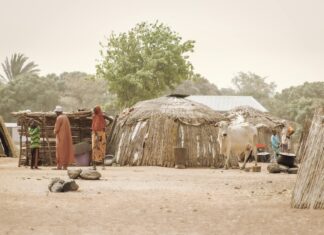Stephen Adewale
It seems that for South African leadership, there appears to be one solution to national problem: more of it.
For over a month now, South Africa has been mired in another round of violent xenophobic attacks. Reports show that the current attacks have left about 10 people dead with many shops and houses owned by foreign nationals looted and completely razed to the ground. The post-mortem analyses of various African writers concerning the current attacks make one despair that this continent is salvageable. The latest that I read was Lekan Sote’s “Xenophobic people of the south.” Before his, I had read Peter Fabricius’s “Xenophobia? What xenophobia, we love foreigners!” There are also several comments by many others.
All of these articles are colourful and unique. After consuming enough of them, one begins to wonder if it is not futile to even try to save the continent. The writings of these intelligent public analysts are relevant for evaluating the worth of the feral nature of outrage, emotionalism and knee-jerk responses to the latest xenophobic attack in the age of social media. We seem to be getting better at summoning the necessary indignation to react to these xenophobic acts, but that is about how far it goes. We are not doing enough to follow those crises to a reasonable conclusion.
As brilliant as these articles are, they all failed to ask the right question, which is: Is the South African government doing enough to address the problem? The direct answer is No. it is unfortunate that South Africa’s government approach is not to understand xenophobia as a primal behaviour that will be inevitably unleashed on any society whose social and political mechanisms operate with loose nuts and bolts. Instead, xenophobia is treated by a further loosening of the system; undermining the rule of law and staging political drama at the expense of foreigners’ blood. To solve the problem of xenophobia, they thus entangle the continent in even more xenophobic tendencies.
This discourse has resulted to varying xenophobic debates as to why South Africans should perpetrate violence against others, and also why they should not. In her academic paper titled “Xenophobia in South Africa, Historical Legacies of Exclusion and Violence,” Bridger attributed this indecent act exhibited by some nationals to be the product of isolation faced by the nationals during the apartheid era. According to her, students in schools were strategically shielded from the history and politics of other African states, propelling the hostile act towards foreigners.
More condemnable is the policy of silence which the government has adopted overtime. In South Africa’s history, xenophobic tendencies are not even new. Documented history of the country as far back as 1994 shows that such malfeasance was almost a commonplace practice. For example, government failed to respond in 1994 when the first xenophobic incidence was recorded as armed residents of Alexandra engaged in “Operation Buyelekhaya” which literarily means “Go back home.” They blamed the perceived illegal aliens living within the township for the increase in crime rate, sexual attacks, and unemployment.
Government failed to respond in August 1997 when local hawkers in Central Johannesburg attacked their foreign counterparts for two consecutive days, scattering, looting and beating their foreign counterparts. Government also failed to respond in 1998 when a Mozambican and two Senegalese were thrown out of the moving train. This assault was carried out by a group that was returning home from a rally that blamed foreigners for their unemployment, crime and the spread of AIDS. In 2000, seven foreigners were killed in Cape Flat over what police described as xenophobic murder possibly motivated by fear of foreign nationals claiming the property that belong to the nationals. In this same year, a Sudanese refugee was also thrown from a train by a group of armed men in Pretoria. In all these attacks, government failed to respond.
The year 2001 also welcomed another attack between the locals of the informal Handprint settlement and the Zimbabweans on the failure of the Zimbabweans to leave the area as directed by the locals. Turn of these events eventually prompted a response from the government as Thabo Mbeki appealed to South Africans on the Annual Celebration of African Day to be watchful against racism and xenophobia.
However, the notorious attacks that attracted international condemnation were the xenophobic events of 2008. The violence that started on 11th May from the town of Alexandra quickly spread like wildfire to other towns in other provinces. By 30th May when the attack finally ceased, there was a death toll of 62 people, including 21 South Africans, 670 people wounded, dozens of women raped, about 100,000 people displaced and property worth millions of South African rand looted.
While condemning this attack on people, the government still insisted that the incidents were not xenophobic, nor an internal, social or political crisis. Instead, the government chose to see the situation as a criminal issue. In fact, a statement by the then Minister of Safety and Security, Charles Nqakula, initially responding to the attacks in Alexandra said the attack was not a crisis. He said “it was only a problem, if it were a crisis, it would be happening right across the country.” However, the subsequent spread of this attack to other parts of the country did not generate statement from the government to dissuade the situation.
According to a study conducted by African Centre for Migration and Society, at least one foreigner each month falls under delirious attacks since 2008. In both 2013 and 2014, there were brutal attacks on the Somalia nationals. In 2015, there was another round of xenophobic attacks on foreigners similar to that of the 2008 event. This event claimed 15 lives, led to 307 arrests and the displacement of over 2,000 foreigners in the country. In all these attacks, government lack of action was palpable.
Each time xenophobic crisis occurs, government should have managed to look beyond the mushiness this disturbing issue generate and point to the larger structural problems that created them. Politicians of all hues and sizes have made inflammatory comments that laid the foundation of the current crisis: the vocabulary of violence in South Africa barely metamorphoses. For example, Mangosuthu Buthelezi, who was South Africa’s Minister of Home Affairs from 1994 to 2004, threatened as early as August 1994 to propose “to the cabinet, to consider legislation which will impose severe punishment on people who employ illegal citizens, as it is unpatriotic to employ them at the expense of our people.” According to him, “it is really good to consider the wisdom in the saying that charity begins at home.”
Research from reliable institutions and authorities have shown that the xenophobic issues in South Africa is deeper than what many believes. For example, in 2006, South African Migration Project Survey (SAMP) found strong indications of xenophobia among South African citizens. In their study, 50% of the participants favoured deportation of foreign nationals irrespective of their legal status, 75% was against increasing the number of refugees, and a similar 75% favoured the idea of containing refugees in border camps, instead of being integrated into the society.
In 2013, seven years after the first survey, a similar survey was, again, administered by SAMP, and their findings recorded that 50% of South Africans wanted foreigners to have their identity documents on them all the time, 63% would like to have the country’s border electrified, 50% favoured migrants without proper documentation be denied police protection, 30% wanted a complete ban of immigrants into the country, and 14% thought all migrants are coming into South Africa perpetrate crime. These SAMP findings demonstrated consistency in the negative attitude nationals has towards foreigners, especially fellow blacks from African countries.
Rather than adopt political approach as a solution, more introspective leaders should have asked why certain practices recur in the life of the nation, and how to evolve enduring methods that address its citizens distrust of their fellow African men and women. It is ironical that South African government response towards xenophobic attack has been more of grandstanding and it is playing contributory role in the unhealthy environment between its citizens and foreigners making a considerable percentage of South Africans ignorant of foreigners’ experiences in the country.
Going forward, there is a need for the South African government, and the foreign office in particular to dialogue with its citizens and holistically examine the complaints made by its citizens. The government glosses over the issue that its citizens are not attacking foreigners because they are foreigners rather, they feel foreigners are depriving them of certain essential necessities of life. Xenophobia is not an issue of criminality and immigration, neither can it be resolved through policing and immigration policy reforms. The surrounding issue mostly has to do with the misreading of differences. The argument that foreigners are responsible for their poverty, inadequate service delivery, and general lack has not been clearly debunked by the government.
South African government should be reminded that, in the spirit of African unity, solidarity and brotherliness, African countries stood firmly with South Africans through the deployment of massive human and material resources to end apartheid. Escaping state persecution in their homeland, South African exiles were forced by circumstances to be scattered across the continent. Terrorist attacks and military conflicts occurred in Angola, Botswana, Zimbabwe, Lesotho, Mozambique and other African countries due, in part, to these countries’ support of the anti-apartheid struggle. Today, South African companies enjoy high patronage and profits in different parts of Africa. Given these historical and contemporary realities, it behoves on the South African authorities to reciprocate by treating migrants with understanding and trust, decency, dignity and decorum. Immigration rules should also ensure fairness, firmness, and balance between security concerns, economic diversity, skills requirements, and tourism.
Continental problems require continental solutions. Given the continental nature of the xenophobic phenomenon, continental cooperation remains the only key to addressing the challenge. In this regard, tackling xenophobe’s problems with one outrage at a time is unsustainable in the long run and African Union needs to come up with progressive ideas and the resources to put lasting initiatives together. Such an agenda is definitely a collective responsibility, and I am putting the burden of intervention on the AU because the continental body has at least demonstrated the desire to rescue Africa through meaningful leadership.
A society should be able to leave retrogressive thinking behind and evolve into modernity but reverse is the case in South Africa. This is not the record South Africa should seek while aspiring for permanent seat at the UN Security Council. With its upcoming dual roles in 2020 as AU chair and UN Security Council member, South Africa is well positioned to be an effective global actor. Ironically, the best way forward for the country may well be found by looking back. Its global and local futures are linked. Only by addressing its distracting domestic xenophobic challenges that the world will take the country’s leadership seriously. South Africa’s future depends on recommitting to the values that got it to the high diplomatic table in the first place.
The stakes could not be higher. In the interests of South Africa in particular, and Africa at large, South African leadership should worry less about raising expectations and instead get to work to make sure that the country exceeds them.
THE VIEWS OF THE ABOVE ARTICLE ARE THOSE OF THE AUTHOR AND DO NOT NECESSARILY REFLECT THE VIEWS OF THE KAFTAN POST EDITORIAL TEAM











Great write-up, I¡¦m regular visitor of one¡¦s blog, maintain up the excellent operate, and It is going to be a regular visitor for a long time.